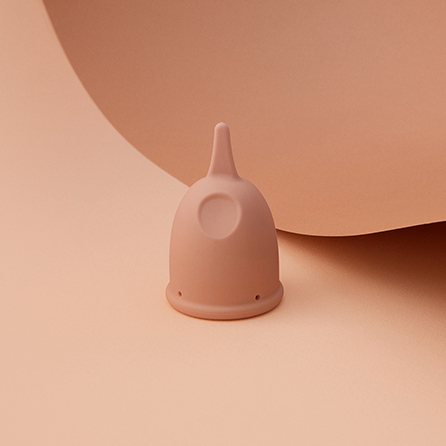Sep 27, 2024
PERIOD CUP FAQs: ADDRESSING COMMON CONCERNS AND MISCONCEPTIONS
In recent years, period cups have surged in popularity as an eco-friendly, cost-effective alternative to traditional menstrual products. Despite their growing use, many people still have questions and concerns about using period cups. Here we’ll address the most common FAQs and clear up any misconceptions.
What is a Period Cup?
A period cup, also known as a menstrual cup, is a reusable bell-shaped device made from medical-grade silicone, rubber, or latex. It is designed to be inserted into the vagina to collect menstrual fluid rather than absorb it, as tampons and pads do.
How Do You Insert a Period Cup?
Inserting a period cup might seem daunting at first, but with a bit of practice, it becomes second nature. Here’s a step-by-step guide:
- Wash Your Hands: Always start with clean hands to prevent introducing bacteria.
- Fold the Cup: There are various folding techniques, such as the C-fold or punch-down fold. Find the one that works best for you.
- Insert the Cup: Relax your pelvic muscles, and gently insert the folded cup into the vagina, aiming towards the tailbone.
- Rotate for Seal: Once inserted, rotate the cup slightly to ensure it opens fully and creates a seal against the vaginal walls.
Can You Feel the Cup Inside You?
When inserted correctly, you should not feel the period cup at all. If you do feel discomfort, it might be positioned incorrectly or not fully unfolded. Adjust the cup by gently pushing or rotating it until it feels comfortable.
How Long Can You Wear a Period Cup?
A period cup can be worn for up to 8 hours, depending on your flow. This extended wear time is one of the significant advantages over tampons and pads, which require more frequent changes. However, it’s crucial to empty and clean the cup at least twice a day to maintain hygiene.
How Do You Remove a Period Cup?
Removing a period cup is straightforward:
- Wash Your Hands: Again, start with clean hands.
- Find a Comfortable Position: Squatting or sitting on the toilet can help.
- Pinch the Base: Pinch the base of the cup to break the seal, then gently pull it out.
- Empty and Clean: Empty the contents into the toilet, rinse the cup with water or microwave in a steriliser case, and reinsert or store it in its pouch if your period is over.
Are Period Cups Safe?
Yes, period cups are safe when used correctly. They are made from materials approved for medical use and have been extensively tested. However, it’s essential to follow proper hygiene practices, such as washing your hands before and after handling the cup and cleaning the cup thoroughly between uses.
IMPORTANT: Menstrual cups have been associated with Toxic Shock Syndrome (TSS). TSS is a rare but serious disease that may cause death. Read and keep the enclosed information.
Can Anyone Use a Period Cup?
Most people with periods can use a period cup, but there are some considerations:
- Teenagers: Younger individuals may find smaller sizes more comfortable.
- Heavy Flow: People with heavy menstrual flow might need to empty the cup more frequently or choose a larger size.
- IUD Users: It’s generally safe to use a period cup with an IUD, but consult with your healthcare provider to ensure it doesn’t interfere with your IUD strings.
Are There Any Disadvantages?
While period cups have many advantages, they may not be suitable for everyone. Some common concerns include:
- Learning Curve: It can take a few cycles to become comfortable with insertion and removal.
- Public Bathrooms: Emptying and cleaning the cup in public restrooms can be challenging.
- Initial Cost: The upfront cost of a period cup is higher than a box of tampons or pads, though it can pay off over time.
Addressing Common Misconceptions
Myth: Period Cups Are Messy
Fact: With proper technique, using a period cup can be less messy than tampons or pads. The key is to insert and remove the cup carefully and clean it regularly.
Myth: Period Cups Can Get Lost Inside You
Fact: The vaginal canal has a defined end, so a period cup cannot get lost inside you. It sits below the cervix and can be easily retrieved by pinching the base and gently pulling it out.
Myth: Period Cups Are Unhygienic
Fact: Period cups are hygienic when used and cleaned correctly. Silicone, rubber, and latex are all materials that do not harbor bacteria if properly maintained and sterilised.
Period cups offer a sustainable, cost-effective, and convenient alternative to traditional menstrual products. By addressing these common FAQs and misconceptions, we hope to provide clarity and confidence to those considering making the switch. Remember, it’s essential to choose what feels right for your body and lifestyle. If you have any medical concerns or specific questions, consult with your healthcare provider for personalized advice.
Blogs

Jun 08, 2022
EXPLORING PERIOD CARE IN CULTURES AROUND THE WORLD
Our TOM Talks panelist Sabina McKenna explores how different cultures around the world approach period care.
Read More
Jun 08, 2022
STOP APOLOGISING FOR HAVING YOUR PERIOD
Our TOM Talks panelist Mel Mason talks about the importance of not apologising for having your period.
Read More
Jun 07, 2022
STRESSED? NOT SLEEPING? TRYING TO CONCEIVE?
TOM Talk's panelist Georgia Hartmann discussed the links between stress, sleep and fertility.
Read More
Jun 07, 2022
STRESS AND HOW IT AFFECTS YOUR SEX DRIVE
Certified sex coach Georgia Grace is here to unpack the link between stress and sex.
Read More